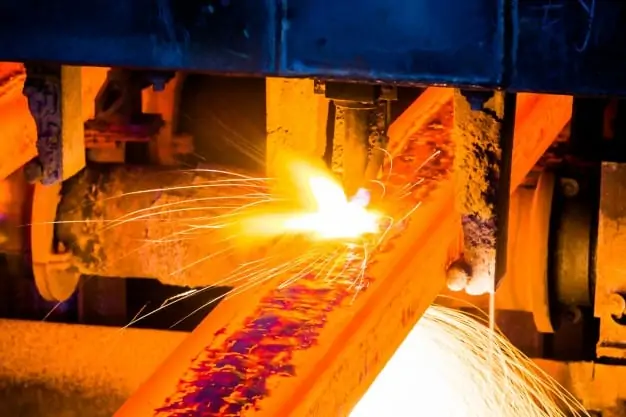You must have seen telecommunication devices, sledgehammers, lawnmowers, medical devices, and so on. They are all a part of our lives. All of them are created using casting and forging techniques. Thus, it’s imperative to know the difference between the two processes.
So, here is cast vs. forged metals for you.
Casting
Casting is a manufacturing process where a molten metal (in a liquid state) is inserted into a hollow mold and solidified. The metal is then ejected from the mold in a solid state to create a final product.
Casting is relatively cheaper than forging as it does not require subsequent metal removal operations to create the final output.
Forging
Forging is also a manufacturing process where solid metal is hammered, compressed, or rolled to change its shape.
Generally, the compressive force is exerted by a hammer or die with appropriate temperature regulation, and one can forge metal under cold, hot, or warm temperatures to shape them.
Forging is relatively costly but it is highly durable and rarely encounters component failures.
Casting Vs. Forging- The Comparison
- The Strength
Materials manufactured using a forging process have much more strength than materials manufactured by casting.
While beating metals, they develop a grain flow. All voids and porous are crushed and eliminated, making it more durable and tough.
But, in metal casting, impurities may remain in the molten metal and they can flow into the mold damaging its conduits.
Moreover, any turbulence in the complex chambers inside the mold can result in voids and pores, making it weaker than forged metal.
So, if you are looking for a durable and tough final product, forging is your best bet.
- The Cost
One does not need complex tools for forging, and that is why, they are relatively cheaper than tools used for casting.
There is a limited amount of rework required on forged materials, which means limited labor cost.
But the entire forging process is costlier than casting because forged products are more durable, safer, and tougher.
Moreover, the cost of component failure in forging is lower than casting. And forged materials are also lighter in weight than casted materials.
- Alloy shaping
By forging, one can shape alloys extracted from metal and additive powders.
The problem with casting is that it cannot melt and cast constituents of these metal and additive powders consolidated from alloys.
But forging uses thermomechanical energy to convert powders into solid metal. The metal is then forged using deformation to give it a shape.
When this expensive metal is forged, it becomes more durable, increasing its usability to make different designs.
On the other hand, if the alloy is segregated from molten metal, it may have several defects, such as tears and cracks. If casted, the solid metal can have inconsistent properties making it weak and less durable.
So, forging can facilitate better alloy shaping.
Final Thoughts- Which one is better?
With all said and done, it is clear that both forging and casting are important, and one does not overweigh the other in all aspects.
Forging may increase the durability of metal by strengthening it up but it cannot give it the exact shape you desire.
If you want to get a metal shape perfectly, you need to cast it inside a mold. Moreover, forging is more expensive than casting.
But, if you want your product to be lightweight, durable and tough then forging is the best option. So, manufacturers need both these techniques to create extensive products.

Founder Dinis Guarda
IntelligentHQ Your New Business Network.
IntelligentHQ is a Business network and an expert source for finance, capital markets and intelligence for thousands of global business professionals, startups, and companies.
We exist at the point of intersection between technology, social media, finance and innovation.
IntelligentHQ leverages innovation and scale of social digital technology, analytics, news, and distribution to create an unparalleled, full digital medium and social business networks spectrum.
IntelligentHQ is working hard, to become a trusted, and indispensable source of business news and analytics, within financial services and its associated supply chains and ecosystems































